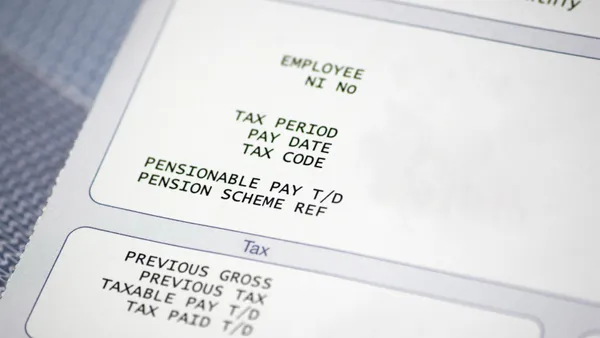The 20th Annual HR Technology Conference was held in Las Vegas this month, the same week Bersin published our 12th annual Disruptions report that identifies the major trends we believe are affecting the industry in the coming year.
HR Technology Disruptions for 2018: Productivity, Design, and Intelligence Reign made the bold statement that the HR technology market is reinventing itself in response to changes in the overall technology landscape, changes in the way we work, and changes in the way we manage organizations.
I found evidence of the report’s ten trends in the sessions, company briefings and show floor booths I visited during the four days on site. Examples of each disruption trend from HR Tech follow.
-
A new focus on tools for workforce productivity. A number of companies not traditionally thought of as HR solution providers were at the show, including Uber for Business. Uber for Business is working with more than 65,000 companies, a representative told Bersin, to offer company ride plans to support workforce productivity. It believes it can partner with HR departments to make daily commutes more productive, make payment and expense reporting more efficient, as well as serve as a safety and welfare information platform, to be used for after-hours trips or to track workers during emergencies.
-
ERP and HCM move to the cloud as the talent market reinvents itself. Big name companies like Oracle, SAP and Workday battle for cloud core HCM business at the high-end of the market, but the small and mid-markets are seeing SaaS activity as well. Companies like Sage were highlighting the newly launched Sage Business Cloud, which includes HCM capability from its acquisition of Fairsail last year. Viventium was another company at the show offering a modern user experience cloud-based system to support the core HCM, payroll, time and attendance, and talent acquisition needs of companies up to 1,000 employees. It currently serves more than 5,600 companies in the U.S., company representatives said.
-
Continuous performance management has arrived. Formerly known as cfactor, VibeHCM was highlighting its expanded suite and new name after merging with payroll provider Electronic Commerce Inc. this year. VibeHCM was one of the first talent management suites that put the employee experience at the center of development and was an early developer of pulse survey, employee recognition and collaboration features that are hallmarks of continuous performance management.
-
The explosion of feedback, pulse survey and analytics tools. ADP’s Compass solution was recognized as one of the top products at the show. Compass is a new 360 feedback and coaching tool to support individuals’ leadership and collaboration behaviors. Notably very simple to use, it requires only an email address to provide coaching to any person, team or organization on any device. Early adoption inside ADP by 8,000 managers in 23 countries supporting 80,000 total workers showed a 10% improvement in their top areas of performance development, with the improvement measured by the 360 feedback givers themselves.
-
The reinvention of corporate learning is finally here. Cornerstone OnDemand is raising the bar not only on the learning experience in its broad HCM and talent management and development platform, but in targeting delivering better business outcomes through its service and support delivery as well. Understanding how customers are using applications has always been a potential benefit of using software as a service (SaaS) providers, but few companies have embraced a metrics driven continuous customer success model as much as Cornerstone has to partner with clients to achieve results, Bersin has observed.
-
The recruiting market is rapidly changing. Two women represented their talent acquisition technology firms at a Women in Technology pre-show panel, which covered how HR technology can be used to support diversity and inclusion efforts. Entelo is enabling more diverse candidate sourcing in its search platform and Textio is offering an augmented writing platform for creating highly effective job listings free from language that may deter diverse candidates. PhenomPeople was also at HR Tech highlighting its sourcing platform, which can customize candidate experiences based on user behavior through machine learning.
-
The wellbeing market is exploding. As I wrap up research on wellbeing platform vendors myself, I was surprised to find more firms at the conference offering wellness solutions in the marketplace. In addition to well-known firms like VirginPulse, I discovered Inspirus from Sodexho, which launched Inspirus Well-being in partnership with LifeDojo, a behavior change specialist.
-
The people analytics market has grown and matured. Many vendors are touting their predictive analytics, but Ceridian demonstrated a thoughtful integration of these capabilities in its new compensation and performance management modules. Managers can use data points on the potential for employees to be a flight risk in their merit raise and bonus award decision-making.
-
Intelligent self-service, communications, and employee experience tools. IBM Watson cognitive technologies are always included in discussions around artificial intelligence in HR, and IBM continues to push the envelope with the official general availability of its Myca career coach at the show. Myca uses natural language processing, chatbot, and Watson information search technologies to deliver customized career management advice to workers on their mobile devices.
-
HR departments are becoming digital and innovative. Finally, Ultimate Software was demonstrating its UltiPro Perception solution (renamed after its acquisition of Kanjoya) which allows leaders to better understand their employees’ emotions, motivations and key drivers for satisfaction and retention. Leveraging its artificial intelligence Xander-technology, it can interpret open-ended survey responses and text-based feedback to uncover the most important strengths of an organization as well as areas to prioritize for improvement. This “voice of the employee” listening capability is in use by more than 240 companies to date, each trying to use the latest digital technologies to inspire meaningful conversations and produce real-time actionable insights in ways HR has never been able to make such a human impact before.
With more than 80 sessions and 400 exhibitors, HR Tech can be daunting and no one can see everything. But I hope this list of the trends and examples can give some structure and context as to how to think about the very real advances we are seeing across the HR Tech landscape and the dynamics of the show.
As more and more companies rethink the solutions they are using to support the HR function and traditional compliance requirements, most also seek more compelling and engaging employee experiences. Attending the HR Technology conference provides glimpses into innovations and new approaches to enabling workers and enhancing productivity, which continues to be the overall ultimate outcome the industry should seek.
Editor's note: This is a contributed piece by Christa Degnan Manning, Vice President, Solution Provider Research, Bersin, Deloitte Consulting LLP.












